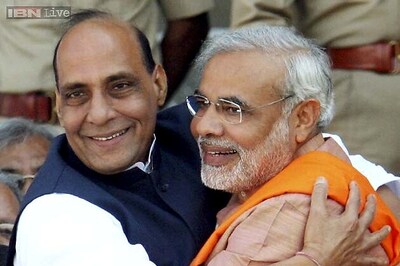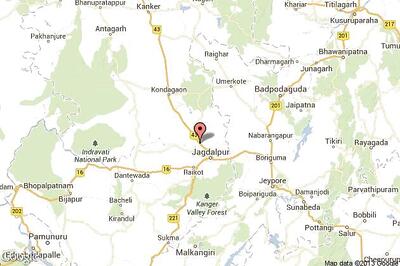
views
Recently, I was watching news items related to the changing developments in Punjab. Suddenly, I was intrigued by the new lexicon used by some of the media houses to describe the Sikh-social stratification. The new buzzword was ‘Dalit Sikh’. It bewildered me since as per the tenets of the Sikh Gurus, which most of us in India follow as our revered Gurus, do not preach and practice caste system or any other social inequality. Interestingly, the very basis of the foundation of Sikhism was social equality, egalitarianism and also non-discrimination. Then, who is a Dalit Sikh? What is the meaning of this word? Dalit-Sikh academically is a misnomer since Sikhism does not believe in casteism.
Sikhs are spread throughout the world and are the most egalitarian and valiant community. Punjab is the only Sikh-majority state in India. In recent years, particularly in the last decade, Sikhism is facing the severest crisis since its inception. Sikhi, which stands for equality and Khalsa (purity), is in danger. There are two kinds of threats — from within and from outside. Both of these threats are interconnected and emanating on account of erosion of the values for which Sikhism was created and stood for. If we analyse the threat from outside, it will give us the clear understanding of the threat from within which is giving rise to threat from outside.
The biggest challenge from outside is the conversion to Christianity by many of the Sikh believers in Punjab. According to the Census 2011, Sikhism is practiced by 16 million people representing 57.69% of the Punjab population. Out of the Punjab districts, Tarn Taran has the highest percentage of Sikh population, 93.33%, followed by Moga (82.24%) and Baranala (78.54%). According to the 2001 census, Sikhs comprised 59.9% of Punjab’s population while Christians accounted for a mere 1.2%. By 2011, there had been a significant drop in Sikh population to 57.69% while the percentage of those following Christianity increased to around 2%.
On probing the data and facts further, I was quivered by the recent change in the religious-demographic profile of Punjab with a galloping increase in the number of Christians in the state. The main targets of the Christian missionaries are Sikhs from the lower class, and the Dalit-Sikhs. On tracing the history of Christianity in Punjab, it is opined by many contemporary historians that the Christian missionaries were not successful to convert many in Punjab in 18th to 20th century since Punjab was late to come to the ambit of the British-empire to facilitate this act. Also, the egalitarian ethos was the cardinal virtue of Sikhism, which was not only preached but practiced too. The Christian community in Punjab was mostly converts from the Hindu community till two decades ago.
But of late, there is a perceptible new undercurrent which is a massive wave of mass conversion of Sikh lower strata particularly in rural landmass into Christianity. Thousands have embraced the new faith of Christianity leaving their old age religion of Sikhism. So much so, the demography of this border state is changing rapidly.
The prime and foremost reason of this massive and probably irreversible conversion is caste-related inequalities practiced within Sikhism. Sikhs Gurus spoke of caste-less society where everyone is treated equally and ordained no discrimination on caste lines, which can be seen from the tradition of Langar (community-kitchen) and Gurudwara being open to all. The four gates of the pious Harmandir Sahib signify and is a symbol of the philosophy that it is open to all four castes.
But the reality is far from this. In practice, the upper caste Sikhs do not mingle with the lower castes such as Ramdasias and Ravidasias. There is no inter-caste dining or marriage. There is a sense of social superiority in the groups who are at the upper echelons of the social ladder. There are separate Gurudwara and separate cremation grounds for these social castes in every urban and rural areas of Punjab. The present day Sikh community leaders, social influencers and religious preachers have failed to promote and nurture such a society as envisaged by the Gurus. While these castes-based discriminations continue to be rampant, Sikh intellectuals and leaders are busy fulfilling their political and material ambitions.
Another reason for disillusionment of lower caste Sikhs is the lack of religious or social way in which the alienation of these people can be addressed to. They are lower in the economic and class hierarchy. They are primarily labour class and no sustained efforts have been done by the religious institutions or by the successive governments to improve their plight. Even if a few of them jump the class ladder, they still do not find social acceptance from the upper caste Sikhs. So, they are easily amenable to the trappings of conversion spread by the missionaries.
The other main reason of the alarming conversion of Sikhs in Punjab is a distinct fall in the standard and standing of Sikh religious-social institutions. This was to be led by the Shromani Gurdwara Prabhandak Committee (SGPC) which is supposed to be the highest temporal authority for Sikhs. Over the years, it has lost its religious appeal on account of its political overtones and its alignment with political groups and over-indulgence in politics. It is seen now more as a political than a religious body. SGPC has also lost its focus on spreading religious tenets and has detoured itself to other than its core areas. Out of the total budget of SGPC, it hardly spends any sizeable amount for the propagation of Sikh religious and spiritual nourishment ideas, which is its main function. The other reason is the misconception crept in the minds of Sikh intellectuals and Sikh followers that the Hindu religion, not conversion, will be a threat to the existence of Sikhism. The recent resolution by SGPC with respect to the Hindu religion highlights this undercurrent. Rather, both Hindus and Sikhs have a common threat. So, instead of nailing the main reason, they divert the attention by using this reason as alibi.
The other reason of these alarming conversions is the zeal of the Christian missionaries. They are ready to go to any extent in spreading their tentacles. Christian missionaries have fully used these fault-lines within the Sikhism by providing social respect and financial incentives to the targeted audience. They use all tactics such as spreading a lie, misinformation or disinformation and even giving incentives of various nature including financial.
One of the ways by which they entice the innocent yet alienated people is by promising them a visa to Canada, England or the USA upon conversion. They entrap illiterate and disabled people to get baptised by convincing them that God would take their pains and sufferings away. The other way is by giving them incentives such as free medical aid in hospitals run by the Christian Missions, free education, healing chronic illness and other financial benefits.
People are leaving their birth religion in favour of a foreign faith. To dispel the belief that Christianity is not foreign, these missionaries allure people by presenting a narrative that Christian missionaries are not alien to the culture rather are a part and parcel of the Punjabi culture and are similar to Sikhism. Churches are coming up in every nook and corner across the state in both rural and urban areas. They are modeled on the shape of the Gurudwaras, Christian Hymns are being sung in the form of the “Kirtan” (musical recitation of the Holy Guru Granth Sahib). Missionaries highlight the fault-lines within Sikhism and claim that their own religion is more acceptable. So much so, in a meeting of pastor associations of Punjab at Circuit House in Ludhiana on November 21, 2019, it was decided that a supreme body Shiromani Church Parbandhak Committee (SCPC) would be formed for the betterment of Christians in the state.
Sikhs in Punjab have a new war at their doorstep – one of the toughest in their history of valiant struggle. It is the severest crisis ever faced by Sikhism. The Sikh religious leaders should recognise and accept this and work towards fighting against it.
The author is an independent columnist and commentator. The views expressed in this article are those of the author and do not represent the stand of this publication.
Read all the Latest Opinions here




















Comments
0 comment